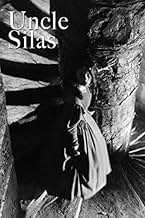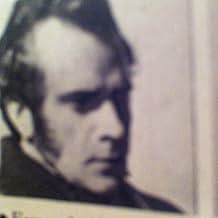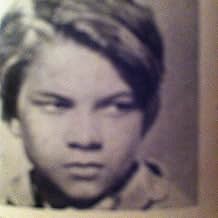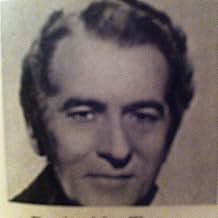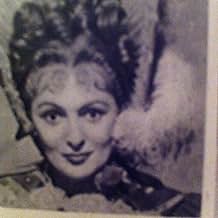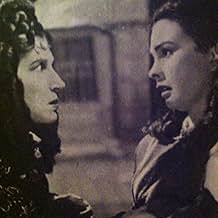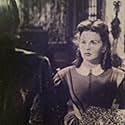Tras la muerte de su padre, una heredera adolescente británica se va a vivir con su tío tutor, que está arruinado y trama asesinarla para quedarse con su cuantiosa herencia.Tras la muerte de su padre, una heredera adolescente británica se va a vivir con su tío tutor, que está arruinado y trama asesinarla para quedarse con su cuantiosa herencia.Tras la muerte de su padre, una heredera adolescente británica se va a vivir con su tío tutor, que está arruinado y trama asesinarla para quedarse con su cuantiosa herencia.
- Dirección
- Guión
- Reparto principal
Reseñas destacadas
UNCLE SILAS (called THE INHERITANCE upon initial release in the United States) fits well into the 1940s cycle of British adaptations of classic Victorian literature. Think David Lean's Dickens movies or the Alaistair Sims A CHRISTMAS CAROL, films which use gorgeous black and white photography and a blend of realism and melodrama to bring these gothic worlds to life.
Of course, UNCLE SILAS hasn't the literary pedigree of a Dickens' work: it is quite a sensational narrative, as close to the first-wave of gothic novels from the 18th century as Victorian gothic literature gets. For the trouble of being pretty and expecting a fortune when she comes of age, the heroine Caroline is threatened by a series of sinister forces connected with her Uncle Silas, a former rake and current drug addict who needs money badly to pay off his debts. He initially tries to get her to marry his lecherous son, but when Caroline makes it loud and clear that she won't do so, his methods turn ever more cruel and murderous.
UNCLE SILAS nails the gothic mood perfectly, showing the decay of Caroline's sunny adolescence as she loses her father and falls into the hands of evil. There is a wonderful symmetry in this progression-- the film begins with a close-up of the wide-eyed Caroline and ends with a similar close-up, now emphasizing her lost innocence after barely surviving the events of the film. Jean Simmons makes the perfect gothic heroine: beautiful, spunky, and virtuous, all without coming off as cloying or too dumb to live, a rare feat for this sort of story. The music is dramatic and spooky.
So why isn't the film the equal of, say, Lean's GREAT EXPECTATIONS or OLIVER TWIST? Mainly, it has to do with two things: pacing and the villains. I love a good slow burn, especially in creepy fare, but some of the middle section of UNCLE SILAS is too slow for its own good, probably because a few of these scenes lack the sinister presence of the forces pursuing Caroline and her money.
Secondly, the villains of the story are an uneven bunch. The sexually aggressive son and the ghastly governess are both slightly comical in presentation, but manage some level of menace when terrorizing Caroline. The son makes it clear he could physically overpower Caroline without a problem and what his intentions are for her, and the governess has a garish, harsh appearance and witch-like personality which would not feel out of place in a child's nightmare. Unfortunately, Uncle Silas himself is not scary at all. He is at times enjoyably camp and I'll never say no to a good ham-fest, but he's never truly frightening, often acting more like a whiny cartoon villain than the decadent, ruthless beast he is supposed to be.
I think the inconsistent sense of dread and menace is what brings UNCLE SILAS down a few pegs. It's still a good movie and one I would recommend to other classic film fans though, as its virtues outweigh its shortcomings.
Of course, UNCLE SILAS hasn't the literary pedigree of a Dickens' work: it is quite a sensational narrative, as close to the first-wave of gothic novels from the 18th century as Victorian gothic literature gets. For the trouble of being pretty and expecting a fortune when she comes of age, the heroine Caroline is threatened by a series of sinister forces connected with her Uncle Silas, a former rake and current drug addict who needs money badly to pay off his debts. He initially tries to get her to marry his lecherous son, but when Caroline makes it loud and clear that she won't do so, his methods turn ever more cruel and murderous.
UNCLE SILAS nails the gothic mood perfectly, showing the decay of Caroline's sunny adolescence as she loses her father and falls into the hands of evil. There is a wonderful symmetry in this progression-- the film begins with a close-up of the wide-eyed Caroline and ends with a similar close-up, now emphasizing her lost innocence after barely surviving the events of the film. Jean Simmons makes the perfect gothic heroine: beautiful, spunky, and virtuous, all without coming off as cloying or too dumb to live, a rare feat for this sort of story. The music is dramatic and spooky.
So why isn't the film the equal of, say, Lean's GREAT EXPECTATIONS or OLIVER TWIST? Mainly, it has to do with two things: pacing and the villains. I love a good slow burn, especially in creepy fare, but some of the middle section of UNCLE SILAS is too slow for its own good, probably because a few of these scenes lack the sinister presence of the forces pursuing Caroline and her money.
Secondly, the villains of the story are an uneven bunch. The sexually aggressive son and the ghastly governess are both slightly comical in presentation, but manage some level of menace when terrorizing Caroline. The son makes it clear he could physically overpower Caroline without a problem and what his intentions are for her, and the governess has a garish, harsh appearance and witch-like personality which would not feel out of place in a child's nightmare. Unfortunately, Uncle Silas himself is not scary at all. He is at times enjoyably camp and I'll never say no to a good ham-fest, but he's never truly frightening, often acting more like a whiny cartoon villain than the decadent, ruthless beast he is supposed to be.
I think the inconsistent sense of dread and menace is what brings UNCLE SILAS down a few pegs. It's still a good movie and one I would recommend to other classic film fans though, as its virtues outweigh its shortcomings.
I really enjoyed "Uncle Silas", although it's called "The Inheritance" on the VHS copy that I own and there are seemingly five minutes of footage missing. It's a wonderful, creepy little film about a young woman, Caroline (lovely Jean Simmons), who goes to live with her scheming old Uncle Silas in his big, gloomy mansion after her father dies. Uncle Silas (perfectly played by Derrick De Marney) and his accomplices; a French governess, Madame de la Rougierre (marvelously played by Katina Paxinou), and his son, Dudley (well played by Manning Whiley) are planning to do away with the heroine to gain her fortune. Thankfully, there are intervals where the young woman visits with her sympathetic cousin Monica (nicely played by Sophie Stewart). Brilliant music score by Alan Rawsthorne is available on CD through Amazon.com on a collection called Rawsthorne:Film Music. Nice cinematography and sets add the finishing touches to this atmospheric film. I got my VHS copy from Movies Unlimited.com.
This moody version of Joseph Sheridan Le Fanu's classic Gothic novel is quite simply one of the most accomplished British films of the 1940's.
With cinematography reminiscent of (and rivaling)that seen in David Lean's "Great Expectations," it is a pity that this picture is not better known.
This may accrue from the fact that an American, heavily edited, and re-titled version ("The Inheritance") is the only print in U.S. circulation.
At all costs avoid this butcher job, as the 6 minutes of missing footage are very germane to the story's narrative, mood and imagery.
Jean Simmons is a reminder of yet another lost dramatic staple--a decorous, demure heroine, who speaks in complete sentences with flawless diction. Her lady like deportment combined with her unquestioned loveliness makes her a very sympathetic Lady Caroline. Mr. De Marney is similarly impressive as the sinister, titular character.
But the film belongs to Katina Paxinou as the redoubtable Madame De La Rougierre. I believe Mr. Le Fanu would approve of her performance. In any case, her first appearance, as depicted with her malignant face peering through a rain lashed window pane, is as startling an entrance as one could hope for.
Laurence Irving's art direction is superb, (and some of his sketches for this film are included in Edward Carrick's "Art and Design in the British Film," Dennis Dobson, London) fully realizing, as it does, the stories' atmospheric requirements, and amply demonstrating how superior sound stages are to location shooting.
All told, this picture stands favorably alongside Thorold Dickinson's "Queen of Spades," Terence Young's "Corridor of Mirrors," Anthony Pelissier's "Rocking Horse Winner," Leslie Arliss' "Night Has Eyes," Jacques Tourneur's "Experiment Perilous," and Martin Gabel's "The Lost Moment," as one of a small group of visually distinguished Gothic melodramas of the 1940's, and far superior to the more recent television version, which despite the welcome presence of Peter O'Toole and Barbara Shelley lacks both flavor and mood.
With cinematography reminiscent of (and rivaling)that seen in David Lean's "Great Expectations," it is a pity that this picture is not better known.
This may accrue from the fact that an American, heavily edited, and re-titled version ("The Inheritance") is the only print in U.S. circulation.
At all costs avoid this butcher job, as the 6 minutes of missing footage are very germane to the story's narrative, mood and imagery.
Jean Simmons is a reminder of yet another lost dramatic staple--a decorous, demure heroine, who speaks in complete sentences with flawless diction. Her lady like deportment combined with her unquestioned loveliness makes her a very sympathetic Lady Caroline. Mr. De Marney is similarly impressive as the sinister, titular character.
But the film belongs to Katina Paxinou as the redoubtable Madame De La Rougierre. I believe Mr. Le Fanu would approve of her performance. In any case, her first appearance, as depicted with her malignant face peering through a rain lashed window pane, is as startling an entrance as one could hope for.
Laurence Irving's art direction is superb, (and some of his sketches for this film are included in Edward Carrick's "Art and Design in the British Film," Dennis Dobson, London) fully realizing, as it does, the stories' atmospheric requirements, and amply demonstrating how superior sound stages are to location shooting.
All told, this picture stands favorably alongside Thorold Dickinson's "Queen of Spades," Terence Young's "Corridor of Mirrors," Anthony Pelissier's "Rocking Horse Winner," Leslie Arliss' "Night Has Eyes," Jacques Tourneur's "Experiment Perilous," and Martin Gabel's "The Lost Moment," as one of a small group of visually distinguished Gothic melodramas of the 1940's, and far superior to the more recent television version, which despite the welcome presence of Peter O'Toole and Barbara Shelley lacks both flavor and mood.
The thing that I like about Uncle Silas a.k.a. The Inheritance is that it is not your average thriller. The suspense is built slowly as we see things that affect the life of the heroine, but she is not aware of them yet. The movie builds up more and more and it becomes an exciting suspense movie that packs a punch even for its time. Jean Simmons is practically a child in this movie, she was so young and beautiful as always. Great acting and gloomy characters make this a fun movie to watch on a stormy night. Lovers of old Gothic tales and suspense movies will not be disappointed.
Sir Hitchcock used to say : the more successful the villain ,the more successful the film .
And "Uncle Silas " got three memorable villains for the price of one. Katina Paxinou appears first as a French teacher ,but her lessons are so terrifying ( you 've got to pronounce "u " properly !say it again " uuuu"!) that her pupil gets nightmares at night ;she sings bizarre songs in French and she takes the ingenue for a promenade .....in the cemetery ...
.......where she meets the second villain(Manning Whiley ) who is none other than her first cousin ,son of sweet uncle Silas ....
.......who is the third baddie (Derrick De Marnay) and lives in a gloomy dark castle , par excellence the Gothic place ,with a roof which can give you the jitters ;uncle Silas is suave ,sly and ,little by little,reveals his true colors :he's the ogre of the fairy tales flash on the bone;
The three actors overplay ,in an outrageous way (mainly Paxinou), turns this Gothic tale into enjoyable grand guignol and combine their efforts to bump off pitiful Jean Simmons and to latch onto her valuable inheritance (hence the alternate title).Jean Simmons ,then at the beginning of a brilliant career ,and who had already a masterpiece under her belt ("black narcissus")
And "Uncle Silas " got three memorable villains for the price of one. Katina Paxinou appears first as a French teacher ,but her lessons are so terrifying ( you 've got to pronounce "u " properly !say it again " uuuu"!) that her pupil gets nightmares at night ;she sings bizarre songs in French and she takes the ingenue for a promenade .....in the cemetery ...
.......where she meets the second villain(Manning Whiley ) who is none other than her first cousin ,son of sweet uncle Silas ....
.......who is the third baddie (Derrick De Marnay) and lives in a gloomy dark castle , par excellence the Gothic place ,with a roof which can give you the jitters ;uncle Silas is suave ,sly and ,little by little,reveals his true colors :he's the ogre of the fairy tales flash on the bone;
The three actors overplay ,in an outrageous way (mainly Paxinou), turns this Gothic tale into enjoyable grand guignol and combine their efforts to bump off pitiful Jean Simmons and to latch onto her valuable inheritance (hence the alternate title).Jean Simmons ,then at the beginning of a brilliant career ,and who had already a masterpiece under her belt ("black narcissus")
¿Sabías que...?
- CuriosidadesThis film's earliest documented US telecast took place in Los Angeles Monday 3/27/50, leading off Triple Feature Theatre on KECA (Channel 7), hosted by Art Baker.
- PifiasThe length of Jean Simmons' ringlets change from one shot to the other.
- Citas
Uncle Silas Ruthyn: And here you are! One of my hopes fulfilled.
- Versiones alternativasThe American release, under the title, "The Inheritance" is six minutes shorter than the original British version, titled "Uncle Silas," after the film's source novel.
- ConexionesVersion of Tela de araña (1947)
- Banda sonoraMy Hat, It Has Three Corners
(uncredited)
American traditional song
Played in the background during the scene in the London hotel.
Selecciones populares
Inicia sesión para calificar y añadir a tu lista para recibir recomendaciones personalizadas
Detalles
- Fecha de lanzamiento
- País de origen
- Idiomas
- Títulos en diferentes países
- The Inheritance
- Localizaciones del rodaje
- Empresa productora
- Ver más compañías en los créditos en IMDbPro
Taquilla
- Presupuesto
- 1.000.000 US$ (estimación)
- Duración1 hora 43 minutos
- Color
- Relación de aspecto
- 1.37 : 1
Contribuir a esta página
Sugerir un cambio o añadir el contenido que falta

Principal laguna de datos
By what name was Uncle Silas (1947) officially released in India in English?
Responde
